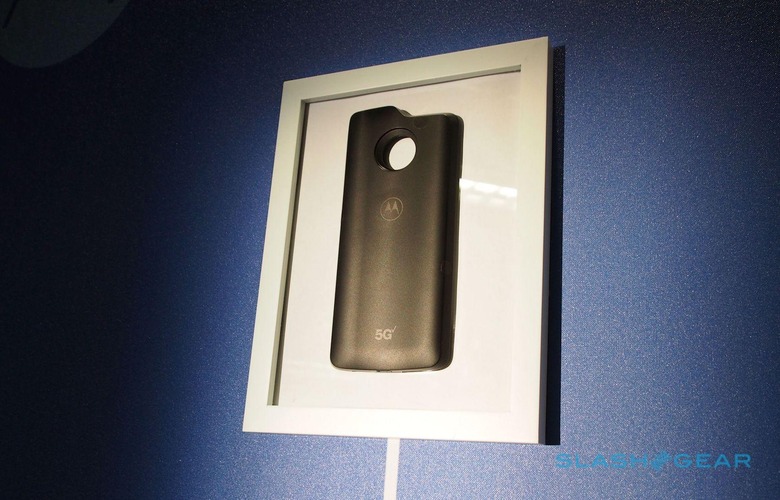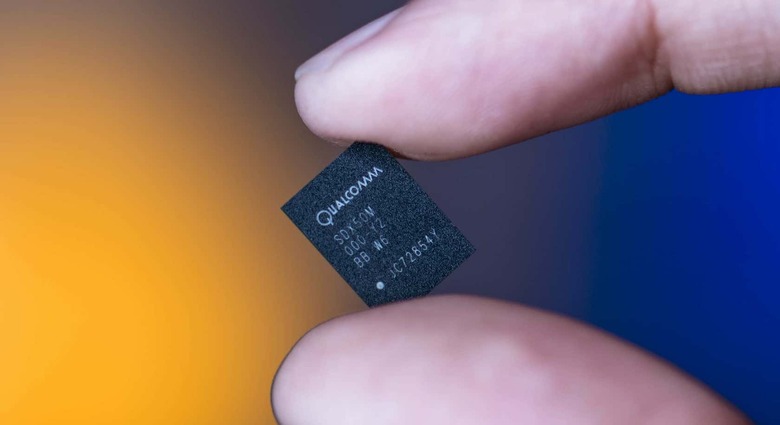No, You Don't Want A First-Gen 5G Smartphone
5G smartphones are still months away, but the carriers are already shouting about their fresh new handsets. Sprint joined the 5G hype club today, announcing it's working with LG on a special device to usher in its fifth-generation cellular network next year. It's hot on the heels of the Moto Z3, a "5G Ready" phone you can buy today from Verizon... just not with any 5G hardware yet.
AT&T and T-Mobile haven't made their play for 5G phone headlines yet, but it's only a matter of time before they get in on the game too. After all, with 5G infrastructure network spending in the billions, it pays to get consumers excited as soon as possible. The sooner you get them onboard, the faster you can start capitalizing on all that investment.
Sure enough, there are plenty of people now asking whether they should be sitting out 2018's smartphones – non-5G handsets like the Galaxy Note 9 and the upcoming iPhone X Plus – and saving their money to buy a first-generation 5G device next year. Early adopters are used to paying handsomely for the privilege of getting the newest toys. This time around, though, you're almost certain to be better off practicing some patience.
I get it. There's a lot to like about being the first in the game with a new technology. Certainly, on the one hand there's the inevitable bragging rights; we're pro-tech-enthusiasm here at SlashGear, as you might imagine.

At the same time, though, there's no denying that 5G will be legitimately useful. Faster speeds mean getting media like movies onto your phone with less of a wait, and pushing media back up into the cloud quicker too. Lower latencies will mean less lag and hiccups in streaming gaming, video, and other applications. The line between what's locally stored and what's in the cloud will be further blurred, increasing the likelihood that you'll have the data you're looking for, no matter what device you have with you. Meanwhile, 5G's better use of spectrum should mean improved connections for everybody, even in congested areas.
So, nobody could really question you for wanting to jump on 5G as soon as it's available. The carriers know that, too: that's why they're starting to announce devices that will run on their fledgling 5G networks, months ahead of them actually showing up in retail.
If the first LTE handsets showed us anything, though, it's that first generation hardware can often underwhelm. Remember the Verizon HTC Thunderbolt, or the Sprint HTC EVO 4G? It's even more the case when it comes to something like a new wireless standard, which has a whole lot of pieces in play.
You have to get the power consumption right. You need to be in a place where the infrastructure has been upgraded to suit. You have to suffer through the inevitable teething pains involved when a carrier starts to open up a brand new network to consumers.
We may have only seen one 5G smartphone, and heard about a second, but some of the most pressing compromises are already clear. Motorola's 5G Moto Mod will have its own battery, so that when it's strapped to Verizon's Moto Z3 it won't suffer vanishingly small runtimes. The LG 5G phone being made for Sprint will have a bigger battery too. These are not going to be the sleek, svelte flagship Android smartphones you're familiar with from today, only with 5G too. They'll be chunkier and less elegant.

The flip side, of course, is that just as the first generation devices – and the components they rely upon – may be clunky, so the industry will quickly move to address that. Qualcomm's X50 5G modem is a good example of that.
Now Qualcomm's modem is clever, there's no denying it. Nonetheless you can also make a strong argument that it's a stopgap: the first batch of phones to use it will pair it with a separate chipset, likely the Snapdragon 845. That won't be as power-efficient as a combined SoC, which we're expecting to see in the Snapdragon 855.
For carriers, 5G is as much about publicly as it is about the technology. It's an opportunity to trumpet what they're doing in network infrastructure – something that's hardly a "sexy" topic even at the best of times – and, at a point when existing coverage is at that "9x-percent of all Americans" level, begin to differentiate themselves from their rivals. Behind the talk, though, will be the fact that 5G is likely to be expensive and rare.
If you're in one of the handful of areas which will get the 5G green light initially, and you have legitimate high-speed data needs, these first handsets could be something worth considering. That's also the case if you want a 5G modem for home internet use, which we're expecting to see hit shelves even earlier, before the end of the year. Everyone else, though, is probably better off waiting.
Make no mistake, 5G is a big deal. It'll have huge implications for phones, tablets, the Internet of Things, connected cars, computing, and more. The networks are right to be investing in it, and we're right to be excited about its potential. Just don't let that excitement simmer over into actually coughing up the cash for a first-gen 5G phone that you might come to regret.
